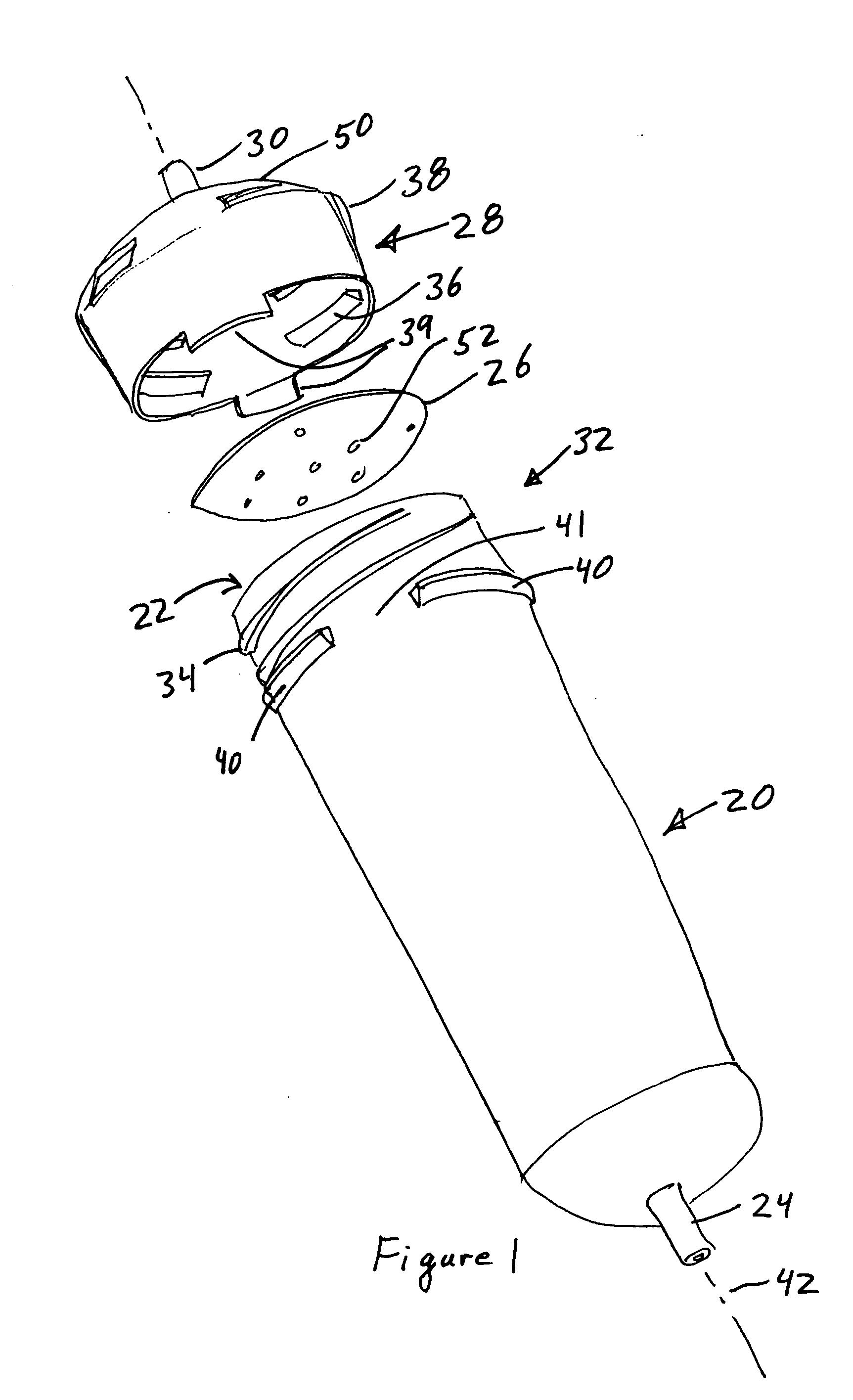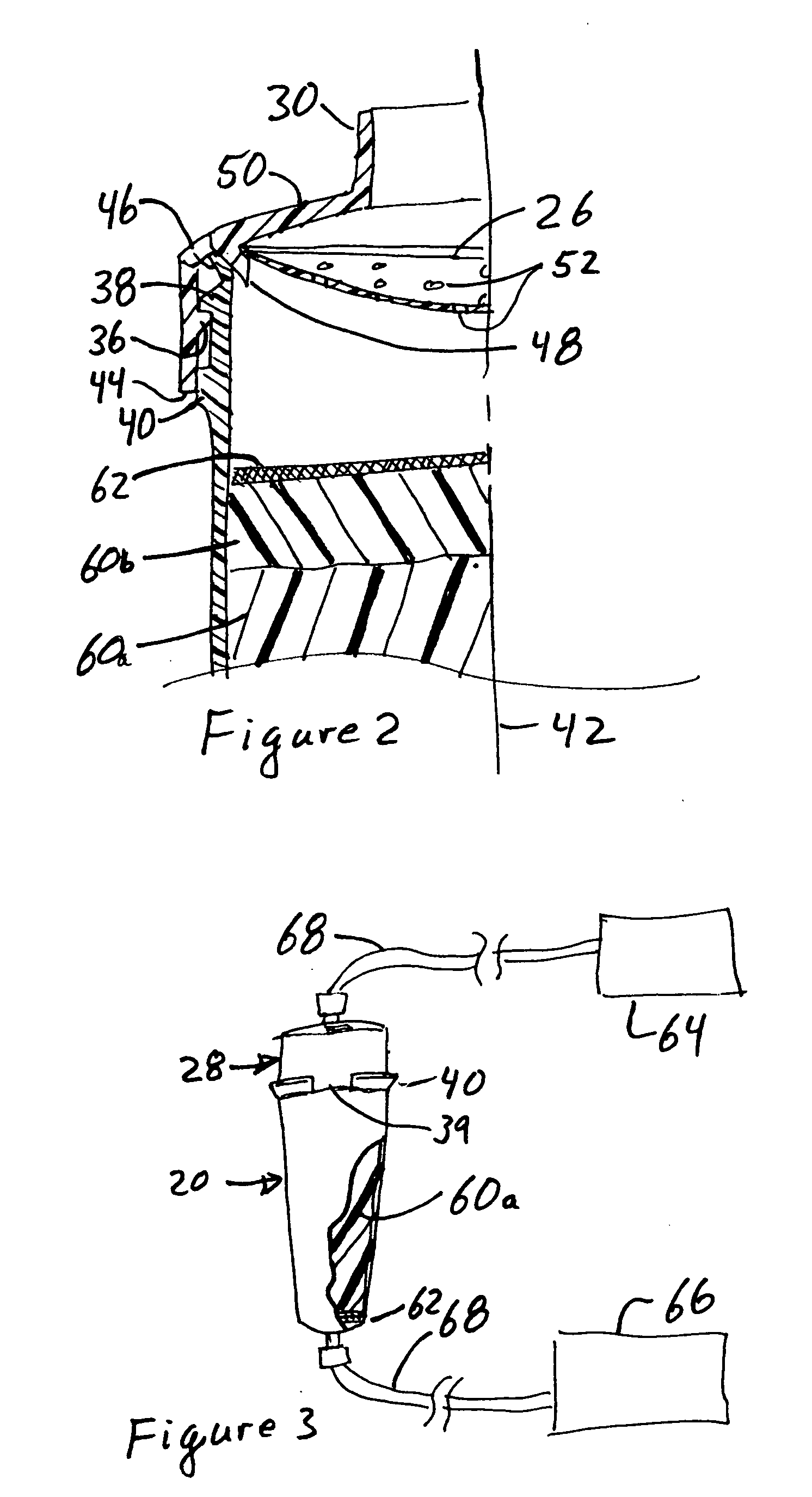Flash chromatography cartridge
a technology of chromatography and cartridges, which is applied in the direction of ion-exchangers, separation processes, instruments, etc., can solve the problems of leaking seams of cartridges, welded construction leakage, and high cos
- Summary
- Abstract
- Description
- Claims
- Application Information
AI Technical Summary
Benefits of technology
Problems solved by technology
Method used
Image
Examples
Embodiment Construction
[0037] Referring to FIGS. 1-2 and 7, a cartridge is provided comprising tubular container 20 suitable for flash chromatography. The container has a cap 28 with inlet and outlet ports 24, and 30, respectively. The container 20 has an open end 22 at and upstream or proximal end, and an outlet port 24 at a downstream or distal end. A fluid dispenser 26 is placed in or upstream of the open end 22 and a cap 28 is fastened over the open end 22 and fluid dispenser. An inlet port 30 is provided on the cap 28. A locking mechanism 32 is placed on one or both of the container 20 and cap 28 to hold the cap to the container. A seal 48 between the cap 28 and container 20 is held in fluid tight compression by mating threads 32, 34 and the locking mechanism 32.
[0038] In use, the inlet 30 is placed in fluid communication with a source of fluid to be processed in a low pressure liquid chromatography (LPLC) or flash chromatography process. Processing or filtering media is placed in the container 26. ...
PUM
| Property | Measurement | Unit |
|---|---|---|
| interference angle | aaaaa | aaaaa |
| angle | aaaaa | aaaaa |
| angle | aaaaa | aaaaa |
Abstract
Description
Claims
Application Information
 Login to View More
Login to View More - R&D
- Intellectual Property
- Life Sciences
- Materials
- Tech Scout
- Unparalleled Data Quality
- Higher Quality Content
- 60% Fewer Hallucinations
Browse by: Latest US Patents, China's latest patents, Technical Efficacy Thesaurus, Application Domain, Technology Topic, Popular Technical Reports.
© 2025 PatSnap. All rights reserved.Legal|Privacy policy|Modern Slavery Act Transparency Statement|Sitemap|About US| Contact US: help@patsnap.com



